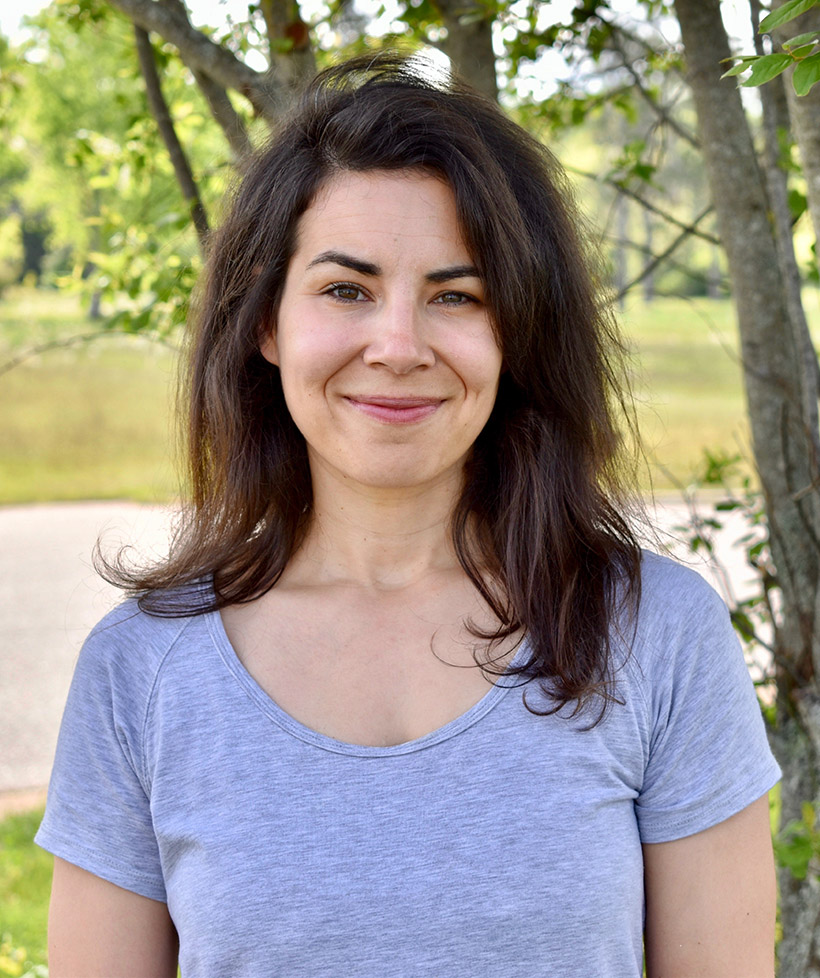 Courtney Gosselin
Courtney GosselinCourtney Gosselin was one of 25 students from Canada and the UK who worked on the COVID-19 Coping Study between March and August. Part of the study was letters people wrote to their past selves (pre-pandemic) and future selves (what they thought at the time would be post-pandemic).
Courtney Gosselin
“Find time for yourself, life will slow down, and that’s okay. Take time to learn lessons, take time to really appreciate everything. You are strong, creative and independent, which will all come in handy.”
- Anonymous, writing a note to their past self during the pandemic
Courtney Gosselin is a graduate student in clinical psychology at Acadia University. She’s doing her Masters-level research with Dr. Karen Blair and Dr. Diane Holmberg, and as COVID-19 has overwhelmed most of our lives, their research has moved in that direction as well. Dr. Blair and her colleagues embarked on a large-scale COVID-19 coping study. At the end of the survey, there were two questions – one was a message to a past self, before the pandemic began. The other, a message to a future self several weeks later.
The questions were inspired by a video made by Italian filmmaker Olmo Parenti called 10 Days Later. In the earliest part of the pandemic, when Italy was being hit harder than nearly any country in the world, Parenti asked Italians to record messages to themselves just ten days earlier – what did they wish they had known just ten days ago?
“What you might think is coming is not nearly what is coming. What is happening is much, much worse than what you thought it could be.”
- Anonymous Italian citizen, 10 Days Later video
The Italian 10 Days Later video was filmed in early March. At the time, it was intended to be a warning to the rest of the world. It was estimated that at the time, France and the United States were about 10 days behind where Italy was in the progression of COVID-19, and the hope was that people in those, and other countries, would see this and take the virus seriously.
When Courtney and her group began asking the two questions developed by Dr. Blair, it was much further into the pandemic. Like, a few weeks further into it, which in March and April was a fairly large passage of time in which an awful lot happened here in Canada. She and fellow Acadia student Abbey Miller developed a coding scheme to look at the more than 500 responses.
There was at least one person who advised their earlier self to “Buy Zoom shares, sell Air Canada, don't worry about toilet paper.”, but very few were so self-serving. What Courtney and her team were struck by was the overall tone of hope, the positivity, and the more optimistic and encouraging series of messages. Advice to take time for self-care, to slow down and enjoy the little things in life. The encouraging messages were ten times more common than the discouraging ones.
“This is a chance for you to connect with the part of yourself that thrives on solitude, thinking, listening to nature, watching the sun rise and set.”
While the messages to past selves were largely optimistic, the messages to future selves were a little different. A lot of them would fall into the category of “hey, self – is it over yet?” Says Dr. Blair, “none of us thought it would go on this long either. Now that we think about it, instead of asking them to write to themselves six weeks from now, we should also have asked them to write for six months, or a year, from now.” Some participants stayed in the study for four weeks, and often their future messages would be the same week in and week out – how are things NOW?
“As the world opens up, how do we cope with physical distance, the funerals that have been postponed and loss in general (not due to COVID sickness but impacted by its limitations)?”
Courtney and Dr. Blair say they would like to do another survey of this kind with a different set of questions to see if the optimism and hope that they saw back in March and April has remained. They would do it a little bit differently though, as logistically this one was a bit of a nightmare for their lab. Software, time zones, and other factors came into play and resulted in a group of students going into the lab almost every night to send out the surveys manually, from 6 pm in Newfoundland to 6 pm in BC.
It was, as a result, a very labour-intensive study to run. Especially for the students, like Courtney and the 24 others from Canada and the UK who worked on it between late March and early August. At the beginning, as the pandemic was just hitting Canada and the study was just beginning, they were running on adrenaline. The need to get something done, the need to find a way to help during the COVID-19 crisis, drove them to work longer hours and search for answers.
If they were to do it again now, would they have the same motivation? Would they feel the same urgency, almost a year into the pandemic? It’s tough to say – just as it’s tough to say whether the responses would have a similar tone today as they did back in April. As one participant said,
“Am I still being a positive person?”
